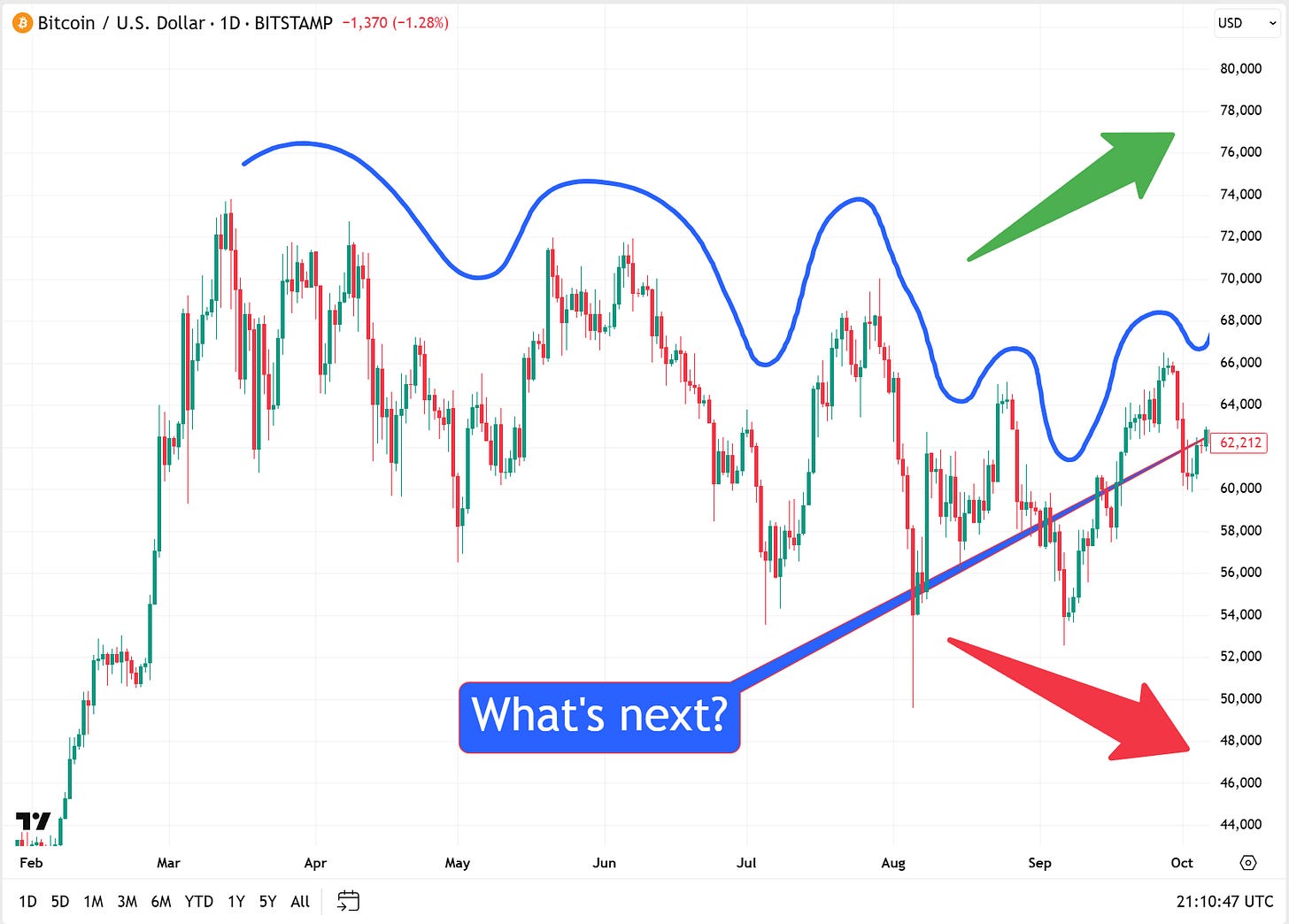How to Build a Profitable Trading Strategy
Forget the Hype And Start Seeing the Markets Clearly
You’re staring at yet another altcoin chart.
Volume is surging, candlesticks are exploding, and your favorite Telegram group just pinged:
“$ARB to $2.50 🚀🚀🚀”
Your heart starts racing. You almost enter the trade.
But something feels off. No confirmation. No structure.
And that’s the moment you realize:
You don’t need another signal - You need a system.
The Illusion of Simplicity
YouTube/X is filled with hot takes:
“Buy when the volume spikes.”
“Sell when the 15-min EMA crosses down.”
Sounds simple, Clean and Predictable.
But in practice, it’s chaos.
Why?
Because no single indicator can catch the entire market narrative.
Let me show you how to think in order to build a profitable trading strategy, and why combining tools is more effective than relying on any one.
The Foundation of Every Great Strategy: Confluence
If you’ve been in the market long enough, you’ve seen this pattern:
A breakout above resistance fails.
A "golden cross" turns out to be a bull trap.
Volume spikes right before a 10% dump.
These are the moments where confluence makes all the difference.
Let’s break down the components that go into a real trading strategy, using example indicators used by professional traders.
1. Anchored VWAP
Anchored VWAP (Volume Weighted Average Price) gives you a price weighted by volume, anchored from a specific date or event.
Why it matters:
It shows the true average of buyers since a point of interest.
If price is above the anchored VWAP from a major low?
→ Buyers are in profit. Bullish zone.
If below?
→ Caution. Potential resistance zone.
Look at $INJ anchored VWAP from the October 2023 low. Every retest of that line in 2024 acted as support. Once it broke below the line, it turned into resistance.
2. Volume Profile + Price Structure
Volume Profile isn’t just flashy trader jargon; it shows you exactly where traders are emotionally and financially tied into their positions.
These zones become magnets for future price action.
Look for:
High Volume Nodes (HVNs): Strong support/resistance.
Low Volume Gaps: Often filled rapidly—scalpers love these.
$LDO retraced into a low-volume zone from its early 2025 breakout.
Paired with anchored VWAP from January? → We manage to filter out bad entries and increase the win rate.
3. Stochastic Momentum Index (SMI) - Momentum, but Smarter
Unlike RSI or traditional stochastic, the SMI measures momentum relative to a moving average of highs/lows, not just price itself.
This creates smoother, cleaner signals, especially on higher timeframes.
How to use it:
Combine SMI crossovers on 12H with a growing anchored VWAP.
Only take signals when both are aligned.
$SEI gave a 12H SMI crossover on June 22nd. VWAP was rising. Volume profile showed thin resistance above the price.
→ 18% move in 48 hours.
That same SMI signal, without the support of VWAP and Volume Profile, has triggered multiple fakeouts in the past, proving that confirmation matters more than the signal itself.
Putting It All Together: The 3-Layer Strategy Stack
Keep reading with a 7-day free trial
Subscribe to Strategy Master to keep reading this post and get 7 days of free access to the full post archives.








